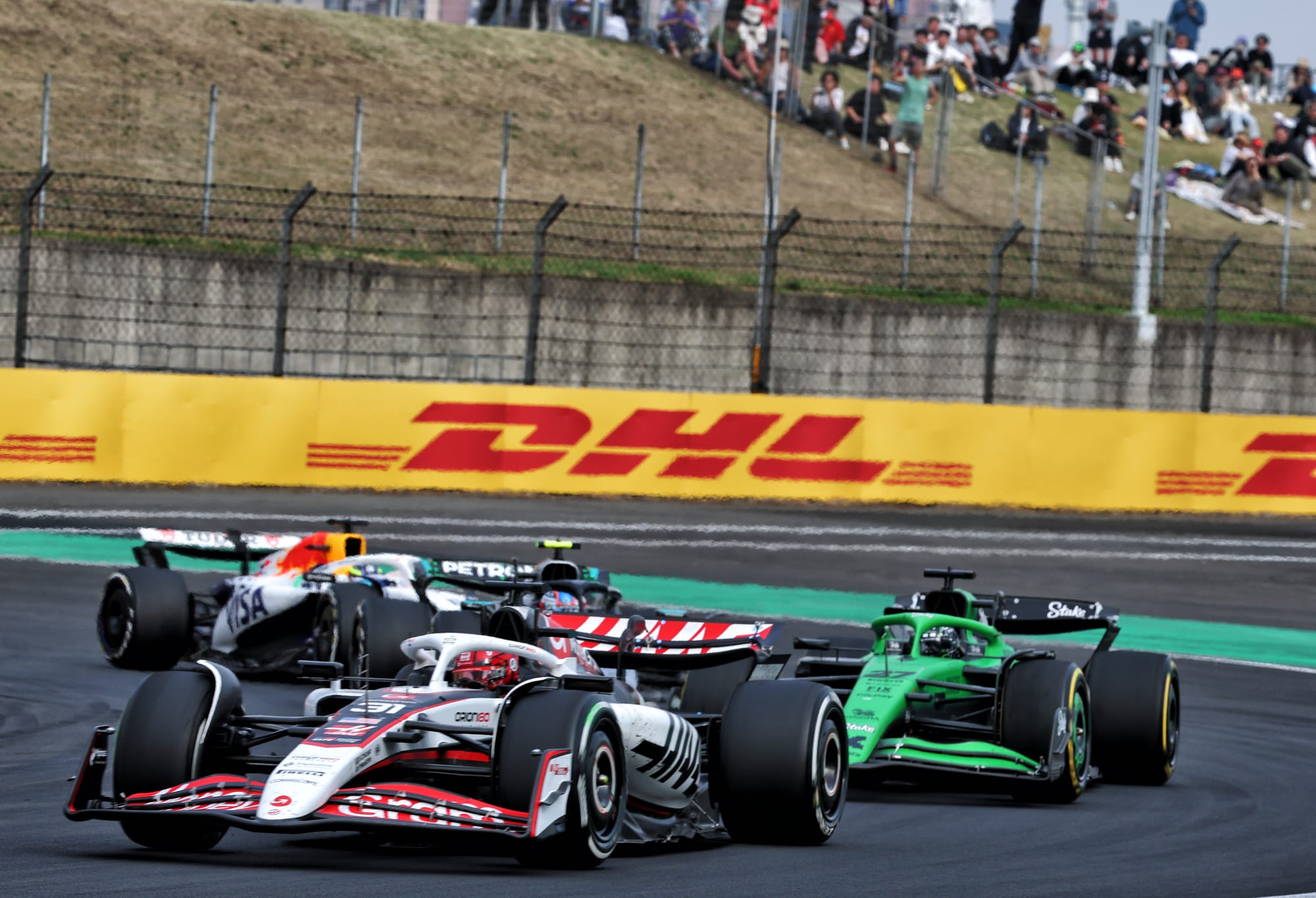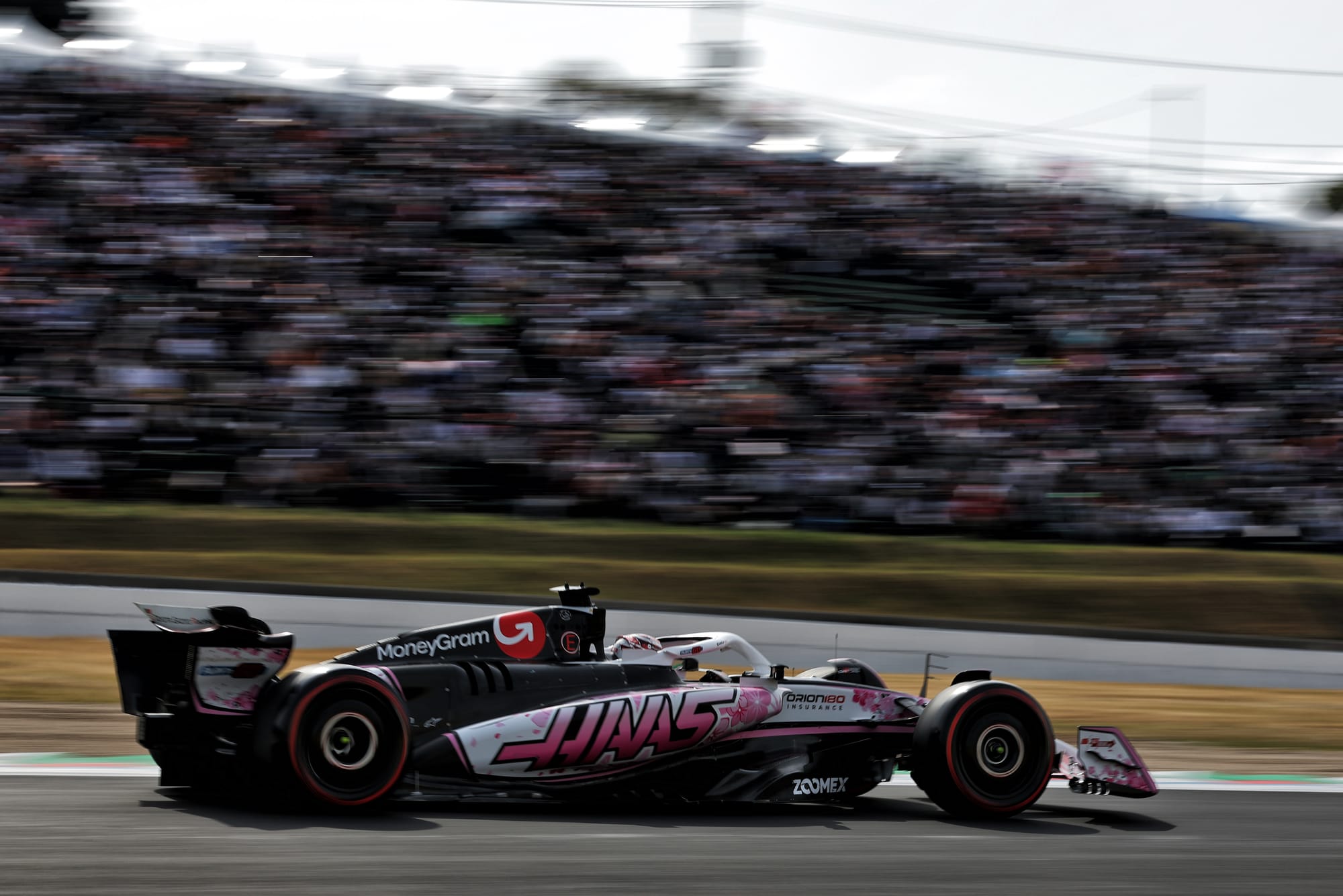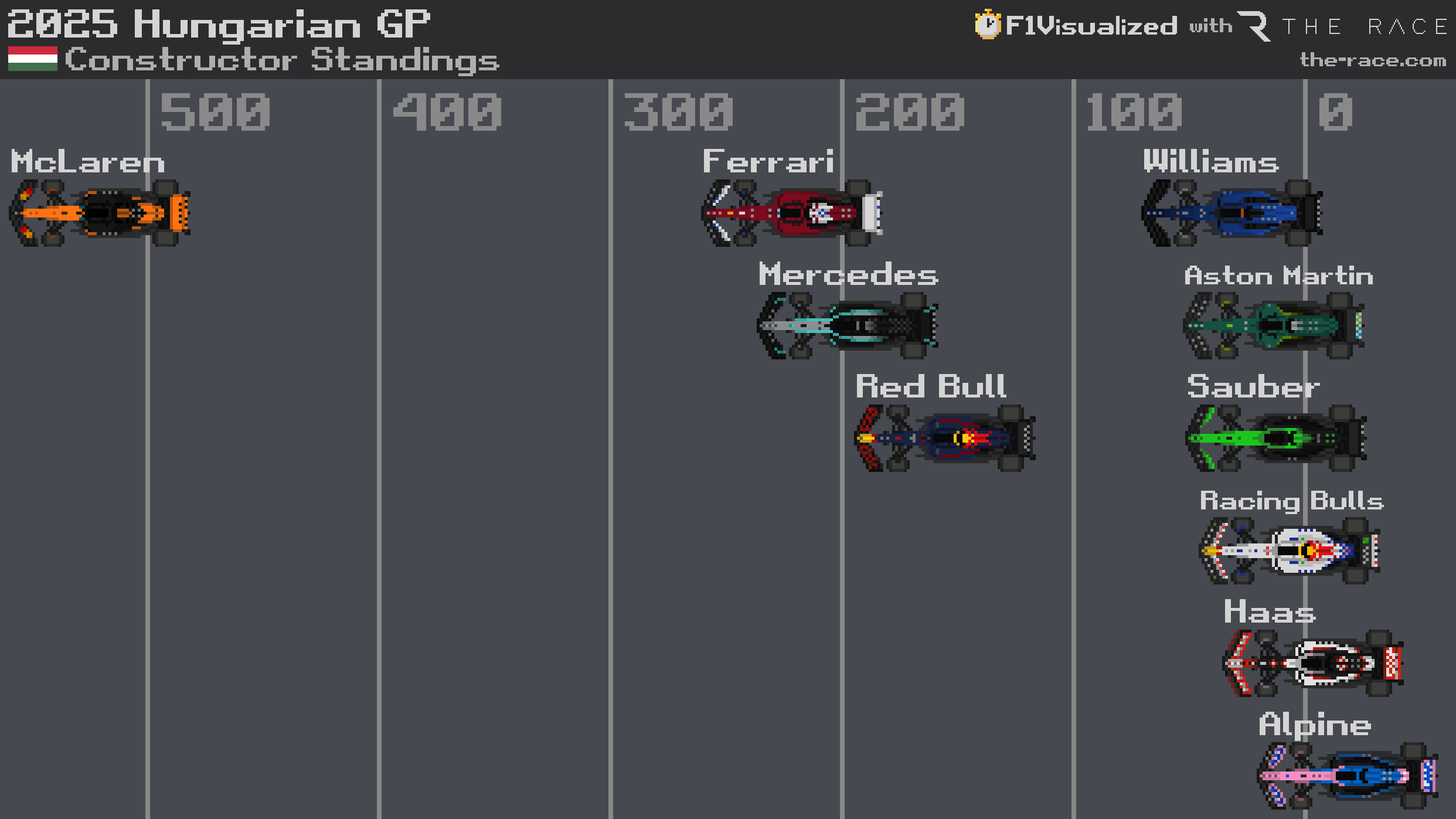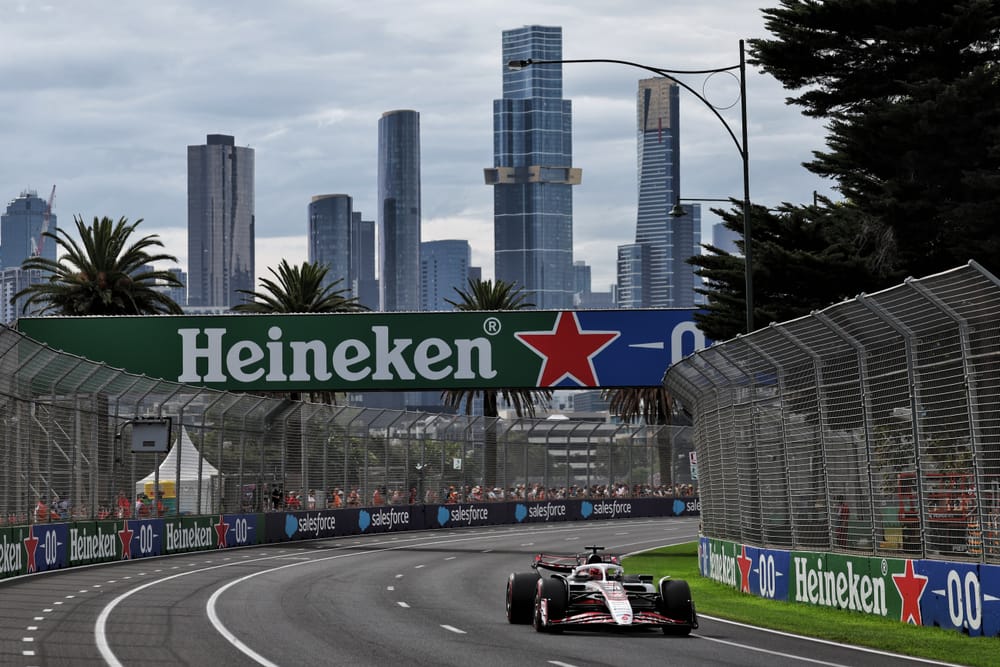A Formula 1 team boss was left "feeling really sick" by his team's surprise slump at the start of the 2025 F1 season - one that was solved by an "educated guess".
It's easy to forget, given how quickly it was resolved, but Haas was F1's trouble team at the start of 2025, qualifying last and second last on the grid for F1's season opener and finishing as the last two cars on the road in the Australian Grand Prix.
Haas's VF-25 had a problem that was so severe that its team boss Ayao Komatsu initially thought the car was broken in Melbourne.
That problem was an aerodynamic oscillation in high-speed corners that manifested itself in the car delivering inconsistent levels of downforce through the fastest corners where confidence in the car is paramount.
So it wasn't a case of the car not having the downforce required - it was a big step on from its predecessor - but it wasn't routinely accessible for drivers Esteban Ocon and Ollie Bearman, who were fighting with a confidence-sapping oscillation of downforce.
Melbourne was the worst-case scenario with the bumpy track exacerbating the problem, in particular at the high-speed Turn 9/10 sequence, where the Haas drivers were losing three to four tenths of a second per lap.
That was a horrendous way to start a season, especially given Haas was coming off the back of its second-best season in F1 last year.
"Literally I felt sick," Komatsu said when reflecting on the start of the season.
"Seriously, because like we are six tenths off the next slowest car. Six tenths. How are you going to recover that?

"But there's no option that we had to recover quickly. For me, by race three, right, how are you going to do that? I've never done that before. Nobody's done that before. Not knowing the degree of the issue, which is huge, pretty deep, and then there was not an option not to recover quickly, right?
"So those two incompatible things honestly made me feel really sick. The only thing you can do is work with people, trust those people who made amazing improvements to VF-24. The development rate in VF-24 was amazing.
"So I was talking with the same people. So I just had to say, ‘look, we haven't suddenly forgotten how to make a performing car. Yes, we missed something in the process, but we are the same people who made a VF-24 - end of the year, we were the fifth quickest car.'
"‘So look, there's [a mistake] somewhere from end of VF-24 to what we got here, we'll find it and then we just have to get on with it and then do our best' and then I just had to set the objective clearly: ‘look we need to take some risks'.
"It's not an option, we cannot wait until the planned upgrade in Imola, then the season's over, we cannot have that.
"So Suzuka [round three], I know that it's back to back with Shanghai [round two], we cannot do anything, accept it.
"But Suzuka, with high speed sector one, if we don't change anything, we're going to be last by six tenths again, we cannot have that full stop.
"At no point was I looking ahead thinking, ‘ah s***, we cannot score points for half a season' or whatever, because it's not an option.
"It's not an option to not do anything, even if we fail, we need to do something to learn from it."
What caused it
The oscillation problem - similar to the porpoising issues that Haas had avoided prior to that, but had affected many of its rivals earlier in the ground effect era - couldn't have been predicted in the windtunnel.
"This specific issue on this ground-effect car, simplistically, you cannot run the car on the ground in the windtunnel because you're going to break the belt," Komatsu said.
"Also, certain conditions you cannot replicate in the windtunnel, right? Then, of course, we have a metric to assess those things, which we thought was good because last year we didn't drive into the problem, but as so many other teams drove into the problem last year, because they were ahead.
"Until I think you see the problem, you're not going to know. So the specific issue we had, we didn't have the methodology to predict it through CFD and then to assess the windtunnel result correctly.
"Once we saw the real issue in Melbourne, we had to literally step back every single thing we've done in the development from the end of VF-24 to VF-25 and then trying to see, OK…let's say if you draw this threshold here at a certain metric, it's OK up until this point, but clearly that was wrong."
This wasn't an issue of wrong choices, but in simplistic terms, the problem meant Haas couldn't run the VF-25 in the ideal set-up window - low to the ground - without triggering the oscillations.
"Then once the oscillation issue happens...even if you kept that car in that set-up window, the driver cannot use it," Komatsu explained.
"So then you have to reduce the overall performance so that even if your peak is a bit less, oscillation is less, so the driver can at least get there.
"It's not the problem of set-up. It's a fundamental aero characteristic issue, which is why it was sickening because if it was a set-up issue, it's reasonably easy to solve."
How it was fixed

Given Haas finished a superb fifth and eighth one week later in the Chinese Grand Prix - the joint-second highest points haul of any midfield team this season - you'd be forgiven for thinking it instantly solved the problem.
But Shanghai simply suited the VF-25 more than Melbourne and didn't produce the same oscillating downforce problem with a smoother track and fewer sharp high-speed corners.
The real fix came one week later at Suzuka, which Haas fast-tracked, only running it in the windtunnel after its on-track debut at Suzuka.
Komatsu said it was a "nerve-wracking" wait, with a "50-50" chance of it working at Suzuka given how rushed the development process was.
"We did a first step in Suzuka, which was, I wouldn't say a stab in the dark [but] it was an educated guess," Komatsu said.

"But like I said back then, we didn't have time to windtunnel test it. So we looked at everything we thought, OK, with our best understanding, we think this is the issue'.
"So we did two things for Suzuka, then just fit it [to the car]. And then we put that part in the windtunnel later on, retrospectively. Then we saw that that improved. So that was hypothesis but of course, until we started running Suzuka, you didn't know.
"What I was really pleased about was that we're actually right, that assumption was right, the educated guess was right. So that gave us confidence that, OK, we can keep improving this condition for the next development, which was Imola.
"So Imola, that may not have increased, let's say, our absolute pace that much, but certainly made the car more robust against that kind of condition. Then you could really then focus on putting performance on the car, now that you've got a better base in terms of robustness to mitigate issues like that.
"Then you can really think about putting more performance on the car, which is what you saw in Silverstone."
After fixes across Suzuka and Imola, Haas's Silverstone package last month was its first proper performance upgrade.
Now it's focusing on ensuring it maximises the performance of that upgraded car - something it knows it hasn't done nearly enough since it turned around its round one nightmare.
In fact that Shanghai fifth-eighth is still the team's biggest points haul of the season, with big missed opportunities across rain-affected Silverstone and Spa grands prix.

After a third consecutive no-score last Sunday in Hungary, Komatsu said: "The only way is up, the car is quick, and we have two drivers with potential – we've just struggled putting it together for the last three races.
"We need the summer break, refocus, look at ourselves and then think about how we can deliver."
The team's fully aware of its underperformance, as while a tally of 35 points so far is better than Australia promised, Haas knows it should be better than ninth in the constructors' now that the real potential of the very solid VF-25 has been unlocked.



